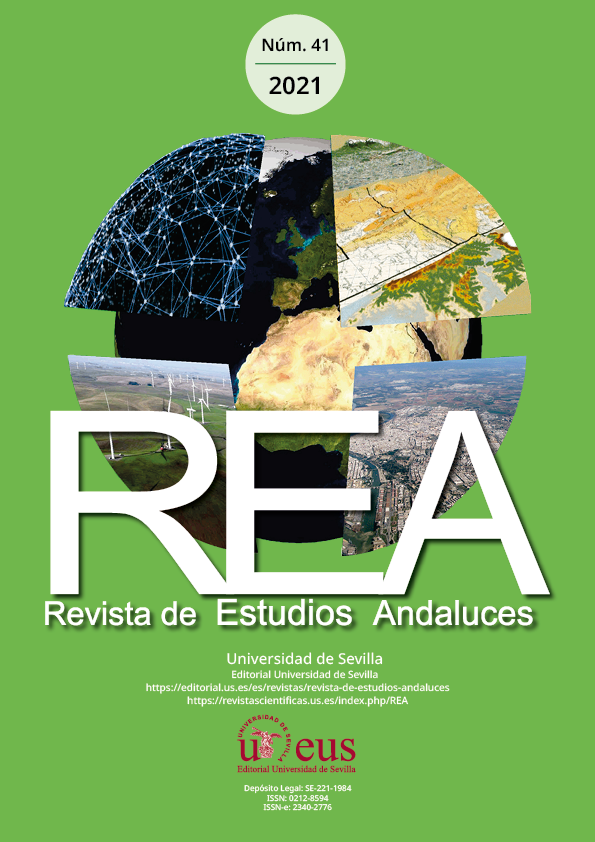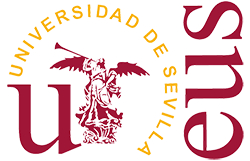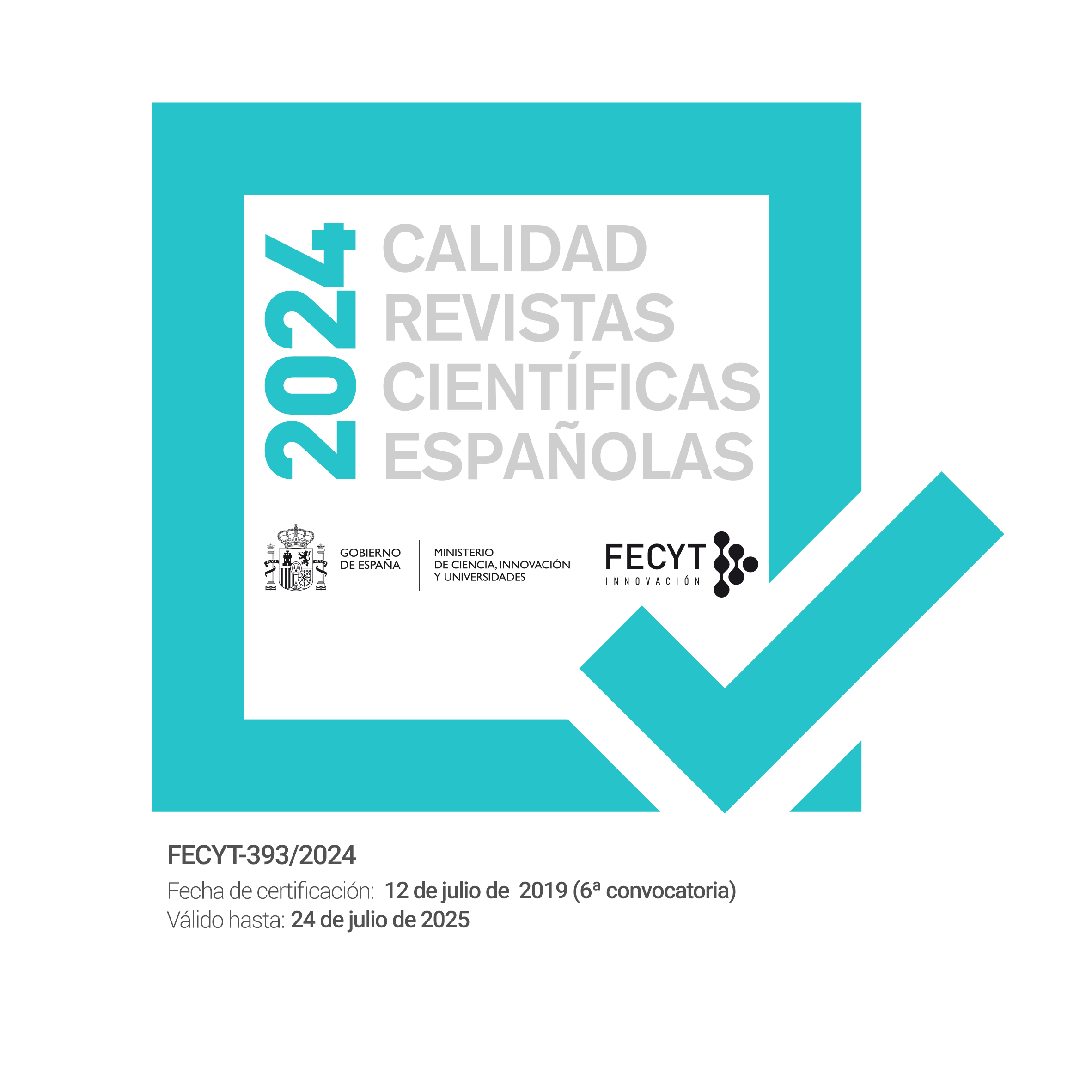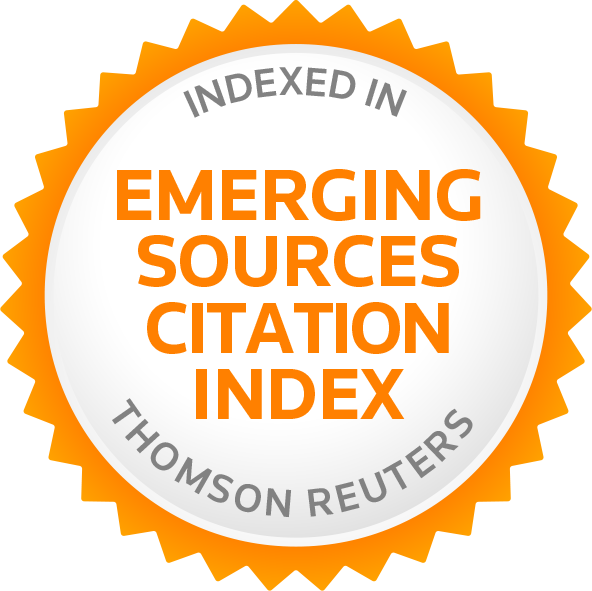The Role of the Web and Social Media in the Tourism Promotion of a World Heritage Site. The Case of the Alcazar of Seville (Spain)
DOI:
https://doi.org/10.12795/rea.2021.i41.03Palabras clave:
Promoción cultura; Alcázar de Sevilla; Turismo; Web; Redes socialesResumen
Las tecnologías de la información y la comunicación han revolucionado el turismo y la promoción de atractivos culturales. Estas son herramienta para potenciar el patrimonio cultural y la economía del territorio a partir de la innovación turística.
El artículo tiene como objetivo analizar el potencial de la web oficial y las redes sociales del Alcázar de Sevilla en la promoción turística, Patrimonio Mundial de la UNESCO. La calidad del sitio oficial y sus redes sociales fue analizada y evaluada a través del modelo 7 Loci y la herramienta Nvivo, identificando sus debilidades y fortalezas. El análisis destacó entre las debilidades, el contenido a optimizar, la imposibilidad de visualizar la información en otros idiomas y una gestión global para revisar. El estudio presenta fortalezas como excelente visibilidad y buen posicionamiento en los principales buscadores, enlaces a redes sociales (Facebook, Twitter, Instagram y Youtube) y que los tiempos para descargar las páginas son los adecuados.
Descargas
Citas
Agostino, D., Arnaboldi, M., & Lampis, A. (2020). Italian state museums during the COVID-19 crisis: from onsite closure to online openness, Museum Management and Curatorship, 35 (4), 362-372. https://doi.org/10.1080/09647775.2020.1790029
Alcázar de Sevilla (2020, 25 de octubre). Alcázar de Sevilla. https://www.alcazarsevilla.org/
Ayuntamiento de Sevilla (2016, 15 de julio). App Sevilla Patrimonio Mundial. https://sig.urbanismosevilla.org/sevilla_patrimonio_mundial/?lang=en
Battelli, E., Cortese, B., Gemma, A., & Massaro, A. (2017). Patrimonio culturale: profili giuridici e tecniche di tutela. Roma: Roma Tre Press. Edited Book.
Bautista, S. S. (2014). Museums in the digital age: changing meanings of place, community, and culture. AltaMira Press.
Bertacchini E. & Morando F. (2013). The Future of Museums in the Digital Age: New Models of Access and Use of Digital Collections, International Journal of Arts Management, 15(2), 60-72.
Biscoglio, I. (2007). Quality Model for Websites: Theories and Criteria of Evaluation. University of California.
Caro, J. L., Luque, A., & Zayas, B. (2014). Aplicaciones tecnológicas para la promoción de los recursos turísticos culturales. XVI Congreso Nacional de Tecnologías de la Información Geográfica, 938-946. http://hdl.handle.net/10045/46827
Censis-Rur (2002). Le città digitali, Rapporto 2001, Milano, Franco Angeli.
Charitonos K.; Blake C.; Scanlon, E.& Jones, A. (2012). Museum learning via social and mobile technologies: (How) can online interactions enhance the visitor experience? British Journal of Educational Technology, 43(5), 802-819. https://doi.org/10.1111/j.1467-8535.2012.01360.x
Chung, N., Han, H., & Joun, Y. (2015). Tourists’ intention to visit a destination: The role of augmented reality (AR) application for a heritage site. Computers in Human Behavior, 50, 588-599. https://doi.org/10.1016/j.chb.2015.02.068
Conti, E., & Moriconi, S. (2012). Le esperienze turistico-culturali: creare valore per i turisti culturali e gli stakeholders e valorizzare il patrimonio culturale della destinazione turistica. Il caso Marcheholiday. Mercati e competitività, 4, 73-98. https://doi.org/10.3280/MC2012-004006
Cozzi, P. (2010). Turismo & Web. Marketing e comunicazione tra mondo reale e virtuale, Milano. Franco Angeli.
Cumo, F., Garcia, D. A., Stefanini, V., & Tiberi, M. (2015). Technologies and strategies to design sustainable tourist accommodations in areas of high environmental value not connected to the electricity grid. International Journal of Sustainable Development and Planning, 10(1), 20-28. https://doi.org/10.2495/SDP-V10-N1-20-28
Del Vecchio, P., Mele, G., Ndou, V., & Secundo, G. (2018). Creating value from social big data: Implications for smart tourism destinations. Information Processing & Management, 54(5), 847-860. https://doi.org/10.1016/j.ipm.2017.10.006
Dieck, M. C.T., & Jung, T. H. (2017). Value of augmented reality at cultural heritage sites: A stakeholder approach. Journal of Destination Marketing & Management, 6(2), 110-117. https://doi.org/10.1016/j.jdmm.2017.03.002
Ejarque, J. (2015). Social Media Marketing per il turismo: Come costruire il marketing 2.0 e gestire la reputazione della destinazione. Hoepli Editore.
Fagioli, M. C. (2015). Human Smarties: The Human Communities of the Future. Computational Science and Its Applications (ICCSA), 2015 15th International Conference, 57-61. http://doi.ieeecomputersociety.org/10.1109/ICCSA.2015.14
Fernández-Baca, R. & Rodríguez, M.C. (2009). Patrimonio Mundial en Sevilla: Catedral, Alcázar y Archivo de Indias. Revista del Patrimonio Mundial, 53, 10-16.
Galvagno, P. (2019, January 25). Web 4.0: quali differenze? https://www.posizionamento-seo.com/search-engine-marketing/web-4-0
Garau, C. (2017). Emerging technologies and cultural tourism: Opportunities for a cultural urban tourism research agenda. Tourism in the City (pp. 67-80). Springer, Cham.
Garau, C., & Ilardi, E. (2014). The “Non-Places” meet the “Places:” Virtual tours on smartphones for the enhancement of cultural heritage. Journal of Urban Technology, 21(1), 79-91. https://doi.org/10.1080/10630732.2014.884384
Garibaldi, R. (2015). The use of Web 2.0 tools by Italian contemporary art museums. Museum Management and Curatorship, 230-243. https://doi.org/10.1080/09647775.2015.1043329
Gustafsson, C. (2019). Conservation 3.0–Cultural Heritage as a driver for regional growth. SCIRES-IT-SCIentific RESearch and Information Technology, 9(1), 21-32.
Handley, A. (2012). Content Marketing: Fare business con i contenuti per il web-Video, Blog, Podcast, Ebook e Webinar di successo. Hoepli Editore.
Hayles, N. K. (2012). How we think: Transforming power and digital technologies. Understanding digital humanities, 42-66. Palgrave Macmillan. https://doi.org/10.1057/9780230371934_3
Huertas, A., & Marine-Roig, E. (2015). Destination brand communication through the social media: What contents trigger most reactions of users? Information and communication technologies in tourism (pp. 295-308). Springer, Cham.
Ioannides, M., Magnenat-Thalmann, N., & Papagiannakis, G. (Eds.). (2017). Mixed reality and gamification for cultural heritage (Vol. 2). Springer.
Jung, T.H., Lee, H., Chung, N. & Tom Dieck, M.C. (2018). Cross-cultural differences in adopting mobile augmented reality at cultural heritage tourism sites, International Journal of Contemporary Hospitality Management, 30 (3), 1621-1645. https://doi.org/10.1108/IJCHM-02-2017-0084
Karkin, N., & Janssen, M. (2014). Evaluating websites from a public value perspective: A review of Turkish local government websites. International Journal of Information Management, 34(3), 351-363. https://doi.org/10.1016/j.ijinfomgt.2013.11.004
Katsoni, V., Upadhya, A., & Stratigea, A. (2017). Tourism, Culture and Heritage in a Smart Economy. Springer International Publishing.
Koramaz, T. K. (2018). 12 Information and communication technologies in cultural heritage management. Cultural Heritage, 155- 166.
Kourouthanassis, P., Boletsis, C., Bardaki, C., & Chasanidou, D. (2015). Tourists responses to mobile augmented reality travel guides: The role of emotions on adoption behavior. Pervasive and Mobile Computing, 18, 71-87. https://doi.org/10.1016/j.pmcj.2014.08.009
Kumar, N., Dadhich, R., & Shastri, A. (2017). MAQM: a generic object-oriented framework to build quality models for Web-based applications. International Journal of System Assurance Engineering and Management, 8(2), 716-729. https://doi.org/10.1007/s13198-016-0512-5
Llopis-Amorós, M. P., Gil-Saura, I., Ruiz-Molina, M. E., & Fuentes-Blasco, M. (2019). Social media communications and festival brand equity: Millennials vs Centennials. Journal of Hospitality and Tourism Management, 40, 134-144. https://doi.org/10.1016/j.jhtm.2019.08.002
Lopez, M.; Margapoti, I.; Maragliano, R. & Bove, R. (2010). The presence of Web 2.0 tools on museum website: a comparative study between England, France, Spain, Italy, and the USA, Museum Management and Curatorship, 25(2), 238-249. https://doi.org/10.1080/09647771003737356
Mascort-Albea, E. J., Ruiz-Jaramillo, J., López Larrínaga, F., & Peña Bernal, A. D. L. (2016). Sevilla, Patrimonio Mundial: guía cultural interactiva para dispositivos móviles. PH, (90), 152-168.
Massarotto, M. (2011). Social Network: costruire e comunicare identità in Rete. Apogeo Editore.
Mavromoustakos, S. & Andreou, A.S. (2007). WAQE: a Web Application Quality Evaluation Model, International Journal of Web Engineering and Technology, 3 (1), 96-120. https://doi.org/10.1504/IJWET.2007.011529
Mich, L., Franch, M., & Gaio, L. (2003). Evaluating and Designing the Quality of Web Sites. IEEE Multimedia, 1(10), 34-43. https://doi.org/10.1109/MMUL.2003.1167920
Milano, C. (2018). Overtourism, social unrest and tourismphobia. A controversial debate. PASOS, 16, 551–564.
Mínguez, C. (2012). The management of cultural resources in the creation of Spanish tourist destinations. European Journal of Geography, 3(1), 68-82.
Mistilis, N., & Buhalis, D. (2012). Challenges and potential of the Semantic Web for tourism. e-Review of Tourism Research (eRTR), 10(2), 51-55.
Nguyen, T. T., Camacho, D., & Jung, J. E. (2017). Identifying and ranking cultural heritage resources on geotagged social media for smart cultural tourism services. Personal and Ubiquitous Computing, 21(2), 267-279. https://doi.org/10.1007/s00779-016-0992-y
Noti, E. (2013). Web 2.0 and the its influence in the tourism sector. European Scientific Journal, ESJ, 9(20), 115-123.
Ortega, G., & Labella, A. (2018). El uso de dispositivos para la interpretación de los bienes culturales en Andalucía. International Journal of scientific management and tourism, 4(1), 589-630.
Padilla-Meléndez, A., & del Águila-Obra, A. R. (2013). Web and social media usage by museums: Online value creation. International Journal of Information Management, 33(5), 892-898. https://doi.org/10.1016/j.ijinfomgt.2013.07.004
Pallud J.& Straub D.W. (2014). Effective website design for experience-influenced environments: the case of high culture museums, Information Management, 51, 359-373. https://doi.org/10.1016/j.im.2014.02.010
Parra-López, E., Gutiérrez-Taño, D., Diaz-Armas, R. J., & Bulchand-Gidumal, J. (2012). Travellers 2.0: Motivation, opportunity and ability to use social media. Social media in travel, tourism and hospitality: Theory, practice and cases, 171-187.
Peukert, C. (2019). The next wave of digital technological change and the cultural industries. Journal of Cultural Economics, 43(2), 189-210. https://doi.org/10.1007/s10824-018-9336-2
Polillo, R. (2005). Un modello di qualità per i siti web. Mondo digitale, 4(2), 32-44.
Rio, A., & Brito, F. (2010). Websites Quality: Does It Depend on the Application Domain? Quality of Information and Communications Technology, 493-498. https://doi.org/10.1109/QUATIC.2010.86
Rossi, C. (2005). Le imprese dell’intermediazione turistica di fronte alla sfida del digitale. Risposte strategiche e condotte operative. Napoli: Liguori.
Ryu, K. H. (2017). Research on Semantic Web-Based Custom Travel Model. International Journal of Applied Engineering Research, 12(20), 9794-9798.
Seville Tourism Website (2020, November 13) Anual Report https://www.visitasevilla.es/en/professionals/research-statistics
Shi, M., Zhu, W., Yang, H., & Li, C. (2016). Applying semantic web and big data techniques to construct a balance model referring to stakeholders of tourism intangible cultural heritage. International Journal of Computer Applications in Technology, 54(3), 192-200. https://doi.org/10.1504/IJCAT.2016.079873
Signore, O. (2005). A comprehensive model for web sites quality. Web Site Evolution (WSE 2005). 30-36. https://doi.org/10.1109/WSE.2005.1
Tabales, M. Á. (2010). La transformación del Alcázar de Sevilla y sus implicaciones urbanas. Archeologia dell´Architettura XIV, 117-130.
Tavakoli, R., & Wijesinghe, S. N. (2019). The evolution of the web and netnography in tourism: A systematic review. Tourism Management Perspectives, 29, 48-55. https://doi.org/10.1016/j.tmp.2018.10.008
Tom Dieck, M. C., & Jung, T. H. (2017). Value of augmented reality at cultural heritage sites: A stakeholder approach. Journal of Destination Marketing & Management, 6(2), 110-117. https://doi.org/10.1016/j.jdmm.2017.03.002
Troitiño, MA; Troitiño, L.; Salmeron, P. & Pérez, RM (2020). La visita pública del Real Alcazar de Sevilla. Bases para la reordenación funcional del conjunto monumental. Apuntes del Real Alcázar 20, 126-169.
UNESCO (2020, 25 October). UNESCO World Heritage Cathedral, Alcazar and Archivo de Indias in Seville (Spain). https://whc.unesco.org/en/list/383/
Van der Zee, E., Bertocchi, D., & Vanneste, D. (2020). Distribution of tourists within urban heritage destinations: A hot spot/cold spot analysis of TripAdvisor data as support for destination management. Current Issues in Tourism, 23(2), 175-196. https://doi.org/10.1080/13683500.2018.1491955
Verdiani, G. (2011). Il ritorno all’immagine, nuove procedure image based per il Cultural Heritage. Lulu. com.
Vila, T. D., & Vila, N. A. (2012). El fenómeno 2.0 en el sector turístico. El caso de Madrid 2.0. Revista de Turismo y Patrimonio Cultural, 10(3), 225-238. https://doi.org/10.25145/j.pasos.2012.10.031
Villa, D. (2015). Crowdsourced Heritage Tourism Open-Data, Small-Data and e-Participatory Practices as Innovative Tools in Alps Cultural Heritage Topic: Information Technology and e-Tourism. Cultural Tourism in a Digital Era (pp. 229-230). Springer, Cham. https://doi.org/10.1007/978-3-319-15859-4_19
Widrich, M. (2018). Moving Monuments in the Age of Social Media. Future Anterior, 15(2), 132-144.
Yang, Z., Cai, S., Zhou, Z., & Zhou, N. (2005). Development and validation of an instrument to measure user perceived service quality of information presenting web portals. Information & Management, 42(4), 575-589. https://doi.org/10.1016/j.im.2004.03.001
Yousaf, A., Amin, I., Jaziri, D. and Mishra, A. (2020). Effect of message orientation/vividness on consumer engagement for travel brands on social networking sites. Journal of Product & Brand Management, Ahead-of-print. https://doi.org/10.1108/JPBM-08-2019-2546
Descargas
Publicado
Cómo citar
Número
Sección
Licencia
Derechos de autor 2021 Revista de Estudios Andaluces

Esta obra está bajo una licencia internacional Creative Commons Atribución-NoComercial-SinDerivadas 4.0.
La edición electrónica de la Revista de Estudios Andaluces se ofrece en acceso abierto desde el número 28 publicado en 2011 hasta la actualidad. Las ediciones impresa y electrónica de esta Revista son editadas por la Editorial de la Universidad de Sevilla, siendo necesario citar la procedencia en cualquier reproducción parcial o total.
La Revista de Estudios Andaluces no cobra tasas por el envío de trabajos, ni tampoco cuotas por la publicación de sus artículos. La Revista es gratuita desde el momento de la publicación de cada número y sus contenidos se distribuyen con la licencia “CreativeCommons Atribución-NoComercial-SinDerivar 4.0 Internacional” , que permite al usuario de la Revista de Estudios Andaluces criterios que cumplen con la definición de open access de la Declaración de Budapest en favor del acceso abierto. Puede consultar desde aquí la versión informativa y el texto legal de la licencia. Esta circunstancia ha de hacerse constar expresamente de esta forma cuando sea necesario.







